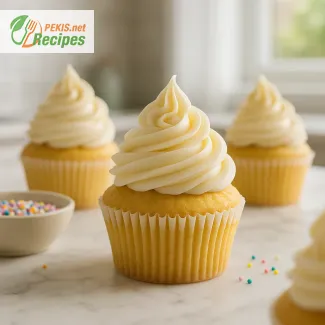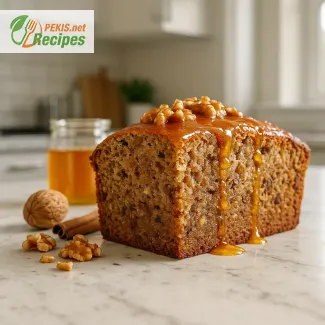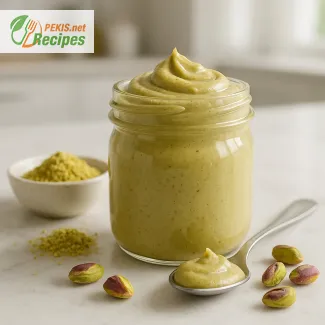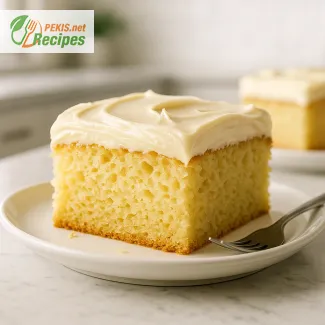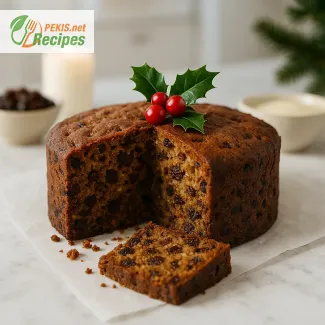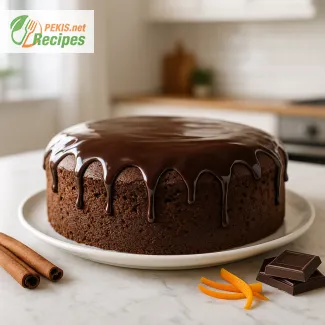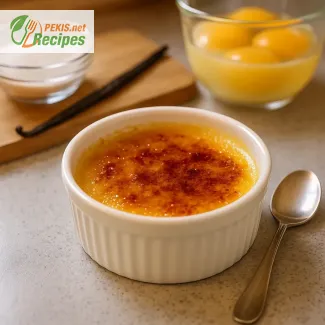
Mastering the Art of French Creme Brulee at Home
A step-by-step guide to creating a restaurant-quality custard dessert
Silky, elegant, and irresistibly rich — creme brulee is one of the most iconic French desserts, loved worldwide for its creamy custard base and thin, shattering layer of caramelized sugar. While it may appear sophisticated and best reserved for fine dining, making creme brulee at home is more approachable than it seems. With the right technique and ingredients, anyone can achieve the perfect balance of smooth vanilla custard and golden brittle topping.
This classic dessert has stood the test of time not only because of its luxurious flavor and texture, but also because of the sense of indulgence it brings with every spoonful. The contrast between the cool, velvety custard and the warm, crackly top is a culinary delight, offering a sensory experience that’s as satisfying to hear as it is to taste.
Origins and timeless appeal of creme brulee
Creme brulee, meaning "burnt cream" in French, dates back to the 17th century. Though the French are credited with popularizing it, similar custards have appeared in English and Spanish traditions, such as Trinity Cream and crema catalana. What sets creme brulee apart is its signature caramelized crust, achieved by sprinkling fine sugar over the chilled custard and torching it until it bubbles and browns. The result is a dessert that combines old-world elegance with a modern visual and textural flair.
The dish has since evolved from royal courts to global kitchens, often featured on high-end restaurant menus and gourmet cooking shows. Yet, its humble list of ingredients — heavy cream, egg yolks, sugar, and vanilla — proves that simplicity is the cornerstone of elegance.
Why creme brulee remains a beloved dessert
Few desserts offer such a satisfying contrast as creme brulee. The spoon cracking through the crisp sugar shell into the delicate custard below has become a ritual of indulgence. But it’s more than just texture — the flavor is equally appealing. Vanilla-infused cream delivers a warmth and sweetness that feels both nostalgic and refined.
Creme brulee is also highly versatile. While the classic vanilla version remains a favorite, it easily lends itself to seasonal variations such as orange zest, espresso, matcha, or even lavender. This adaptability makes it a dessert that fits any occasion, from romantic dinners to festive gatherings.
Key techniques for a perfect creme brulee
To make authentic creme brulee, mastering the baking process is essential. The custard must be cooked gently and evenly, usually in a water bath (bain-marie) to avoid curdling. This low and slow method ensures the custard sets without developing a grainy texture or scrambled consistency.
Another vital step is achieving the caramelized sugar top. This is typically done with a kitchen torch, but the broiler can also be used carefully. The sugar must be thinly and evenly distributed to create a crisp layer without burning. Choosing the right ramekins — shallow and wide — helps to balance the ratio of topping to custard.
When done correctly, the end result is a dessert that dazzles in both presentation and flavor: golden and glassy on the surface, luxuriously creamy beneath.
Ingredients that make a difference
While the recipe requires only a handful of ingredients, quality is key. Heavy cream with high fat content provides a rich and smooth texture. Fresh egg yolks add body and color, while real vanilla beans or extract impart an unmistakable aroma and depth of flavor. Use fine granulated sugar for the topping to ensure an even melt and delicate crunch.
Small variations, such as adding a pinch of salt or infusing the cream with herbs or spices, can elevate the dessert without compromising its identity. Whether traditional or creative, the heart of creme brulee lies in its simplicity and careful attention to detail.
Serving and presentation tips
Presentation plays a major role in the experience of creme brulee. Individual ramekins allow for even cooking and make for elegant plating. For a polished finish, top with a few fresh berries, edible flowers, or a light dusting of powdered sugar around the rim. Always chill the custard thoroughly before torching the sugar to ensure the crisp layer forms instantly.
Creme brulee can be prepared up to 2 days in advance, making it an ideal make-ahead dessert for dinner parties or special occasions. Simply store the custards in the refrigerator, then caramelize the sugar just before serving for optimal texture.
Common mistakes to avoid
Even though creme brulee is straightforward, a few missteps can affect the final result. Overheating the cream can scramble the eggs, while skipping the water bath can lead to uneven texture. Using too much sugar or torching too closely may burn the topping rather than caramelize it.
Patience is essential. From tempering the eggs to slow baking and chilling, each stage builds the custard’s creamy consistency. Avoid shortcuts and allow each step its due time — the reward is a flawless dessert with a perfect contrast of textures and flavors.
The elegance of mastering a French classic
Making creme brulee is about more than following a recipe — it’s about mastering the balance of temperature, texture, and flavor. Each component plays a role in delivering the final experience: from the silken custard to the satisfying crack of its topping.
When done right, creme brulee delivers not only taste but theatre, turning a few simple ingredients into an unforgettable finale. Whether you're making it for the first time or refining your technique, the joy of cracking through that golden shell into creamy perfection is always worth it.
- Preheat the oven to 150°C (300°F). Place 4 shallow ramekins (approx. 150 ml (5 oz) capacity each) into a deep baking dish.
- In a medium saucepan, pour the heavy cream and add the split and scraped vanilla bean (or vanilla extract). Heat gently until just below boiling point, then remove from heat and let it infuse for 10 minutes.
- In a separate bowl, whisk the egg yolks, granulated sugar, and salt until smooth and pale.
- Slowly pour the warm cream into the egg mixture while whisking continuously to prevent curdling.
- Strain the custard through a fine sieve to remove any solids and the vanilla pod.
- Divide the custard evenly among the ramekins.
- Carefully pour hot water into the baking dish to reach halfway up the sides of the ramekins (water bath).
- Bake for 40–45 minutes until the edges are set but the center still slightly jiggles.
- Remove ramekins from the water bath and let them cool to room temperature. Then refrigerate for at least 4 hours or overnight.
- Just before serving, sprinkle about 10 g (¾ tbsp) of granulated sugar evenly over each custard. Use a kitchen torch to caramelize the sugar until golden and crisp. Let sit for 1 minute before serving.
Elevating Your Homemade Creme Brulee with Creative Twists
Flavor variations, healthier ingredients, and expert tips for a refined dessert experience
Creme brulee is celebrated for its elegant simplicity, but even a timeless classic like this French custard dessert can be reimagined with subtle upgrades. Small changes to ingredients or technique can dramatically enhance the texture, flavor, and presentation — turning a well-loved recipe into a signature dessert with a personal touch. Whether you're an experienced home baker or trying this for the first time, understanding how to adjust key elements of the recipe allows you to elevate the dish without compromising its essence.
Using infused creams for depth of flavor
The standard recipe calls for plain heavy cream, but infusing the cream with natural aromatics can add remarkable complexity. Try simmering the cream with orange zest, lavender buds, coffee beans, or green tea leaves. These infusions subtly enhance the base and offer a more memorable taste profile.
For example, using Earl Grey tea provides citrusy bergamot notes that blend harmoniously with vanilla. Adding fresh rosemary or thyme results in a savory-sweet combination ideal for more mature palates. Remember to strain the cream after infusion to maintain a smooth texture.
Replacing vanilla for unique results
Classic creme brulee is often made with vanilla beans or extract, but alternative flavorings can provide a contemporary spin. Tonka bean, for instance, delivers a slightly spiced, almond-like note and has become a favorite in high-end patisseries. Cardamom or star anise offer bold aromatic intensity that stands out without overpowering the custard.
Experimenting with different sugar types — like demerara or coconut sugar — for the topping creates new textures and deeper caramel flavor. Coconut sugar, in particular, adds a nutty character that contrasts nicely with creamy custard.
Making it lighter without sacrificing texture
To create a healthier version of creme brulee, consider using lighter cream or mixing heavy cream with whole milk. This reduces the fat content but maintains a smooth texture if baked carefully. Replacing part of the sugar with maple syrup or honey can also lower the glycemic impact while adding natural sweetness.
An effective trick is to use egg yolks sparingly — some recipes succeed with as few as three yolks per 500 ml of cream. Balancing richness and lightness depends on baking at low temperature and avoiding overcooking, which leads to a rubbery result.
The home advantage: fresher, richer, and more satisfying
A homemade creme brulee is not only more cost-effective but also offers full control over quality. Using fresh organic eggs, high-fat cream, and pure vanilla ensures the custard turns out richer and more aromatic than most restaurant versions that rely on mass-produced bases.
Additionally, preparing the dessert yourself lets you adjust the sweetness level, choose the topping thickness, and tailor the flavor profile to your preferences. Homemade versions can also be made in various ramekin sizes, including mini-portions for more delicate servings.
Avoiding common mistakes in preparation
Achieving the ideal custard texture requires precision. One of the most frequent errors is overheating the cream, which can cause eggs to scramble when combined. To avoid this, let the cream cool slightly before whisking into the egg mixture.
Another issue is not straining the custard, which results in a lumpy texture. Always pass the mixture through a fine sieve before filling ramekins. Lastly, overbaking can lead to a grainy consistency. The center should still wobble slightly when removed from the oven.
For the sugar topping, using a torch with controlled heat prevents burning the top or leaving uneven patches. Letting the custards chill thoroughly before caramelizing ensures the sugar sets into a delicate, crisp layer.
Enhancing texture with custard alternatives
If you're exploring other custard styles, substituting some of the cream with mascarpone or Greek yogurt introduces a tangy dimension while maintaining richness. For dairy-free options, full-fat coconut cream works exceptionally well, offering a hint of tropical flavor that pairs beautifully with lime zest or ginger.
Texture can also be fine-tuned by adjusting the egg ratio. Using fewer yolks makes the custard softer and more delicate, while adding a whole egg creates a firmer base. Choosing your preferred consistency can transform the eating experience entirely.
Garnishing for presentation and flavor contrast
To elevate the visual appeal and taste, garnish with fresh berries, edible flowers, or a light dusting of cocoa powder. A sprig of mint adds color and a refreshing aroma. If serving for a special occasion, consider individual ramekins with customized toppings — such as crushed pistachios, shaved chocolate, or a drop of fruit coulis at the bottom for a surprise.
Serving the dessert slightly chilled with a freshly torched top offers the perfect contrast between cold creaminess and warm caramel crunch. Pairing with a dessert wine or coffee rounds out the sensory experience.
Customizing for dietary needs
For guests with dietary restrictions, creme brulee can be adapted in simple ways. As mentioned, dairy alternatives like oat or coconut cream work well, though they may yield a looser set. Replacing sugar with erythritol or other natural sweeteners allows for a lower-carb version suitable for ketogenic or diabetic diets.
When considering gluten-free needs, creme brulee is naturally compliant, making it an excellent option without any major adjustments. For nut allergies, simply avoid garnishing with almonds or nut-based toppings.
By understanding the science and sensory impact behind each ingredient, home cooks can confidently modify creme brulee to suit a range of preferences while preserving its essential indulgence.
Allergens present in the recipe:
- Milk (heavy cream)
- Eggs
Contains gluten?
- No, this recipe is naturally gluten-free.
Substitution tips for allergens:
- For dairy-free: replace heavy cream with full-fat coconut cream (500 ml (2 cups)).
- For egg-free: not recommended as egg yolks are essential for texture.
Vitamins and minerals per serving (approximate):
- Vitamin A – 970 IU: Supports vision and immune function
- Vitamin D – 50 IU: Promotes calcium absorption and bone health
- Calcium – 95 mg: Essential for bones and teeth
- Phosphorus – 100 mg: Supports cell repair and energy production
- Selenium – 12 mcg: Important antioxidant support
- Choline – 120 mg: Supports brain and liver health
Antioxidants per serving (approximate):
- Vanillin (from vanilla) – 6 mg: Natural antioxidant that may reduce cell oxidation
- Selenium (from egg yolks) – 12 mcg: Helps protect cells from oxidative stress
- Phenolic compounds (from caramelized sugar) – small amount: May provide minimal oxidative protection in trace levels
